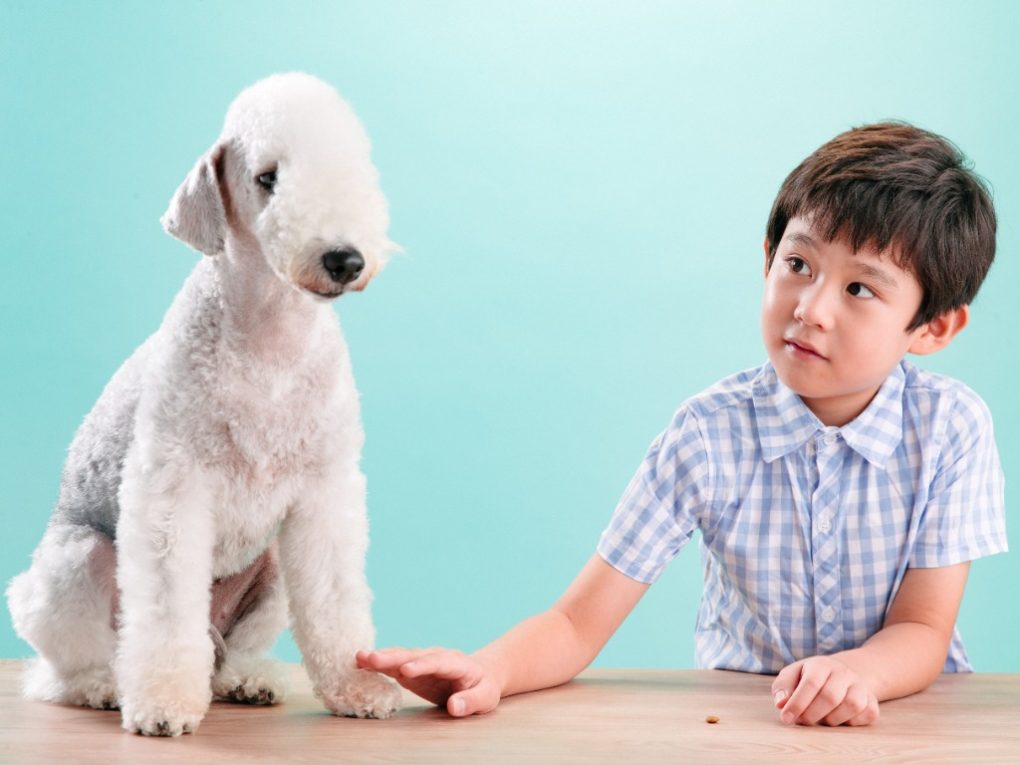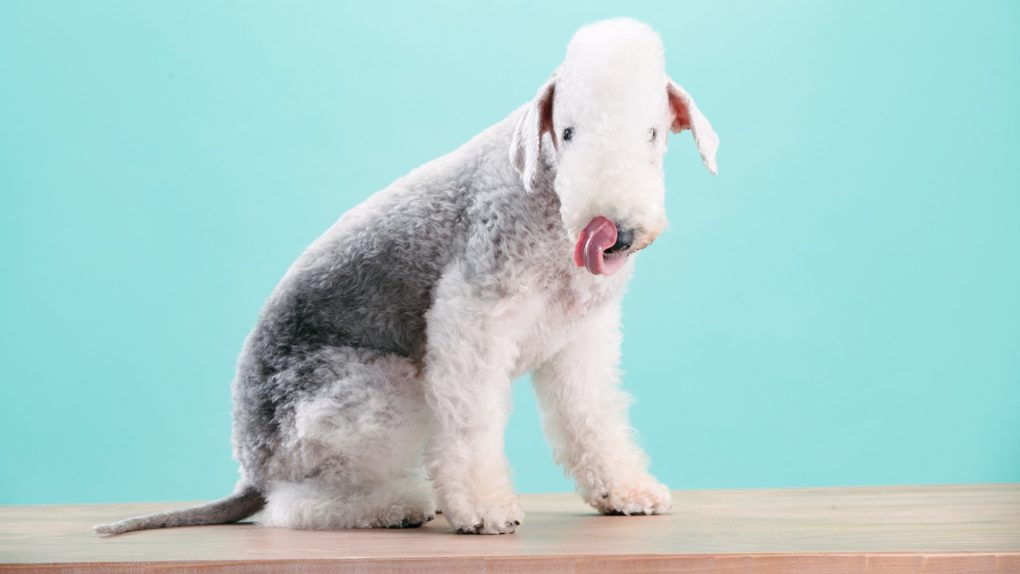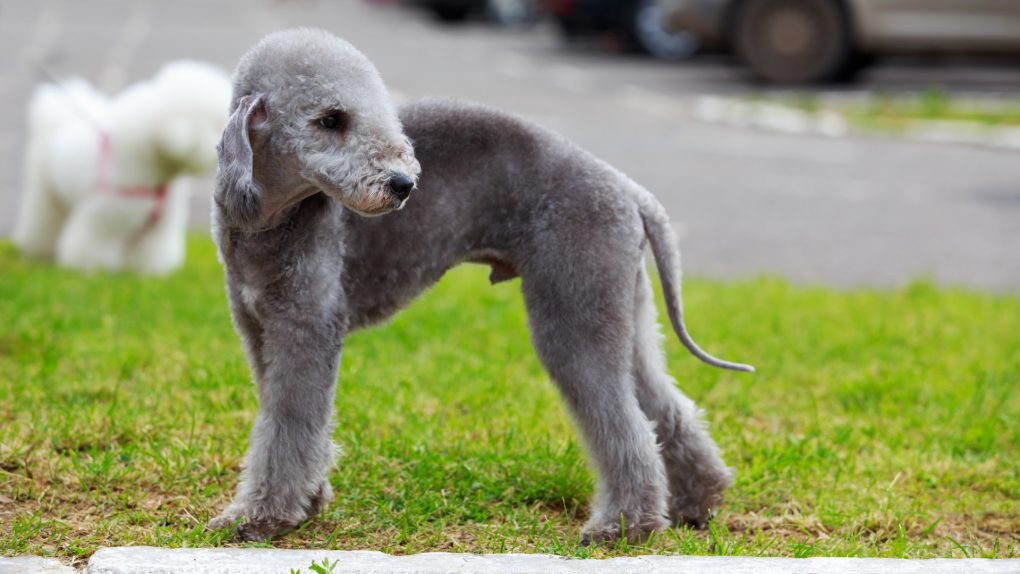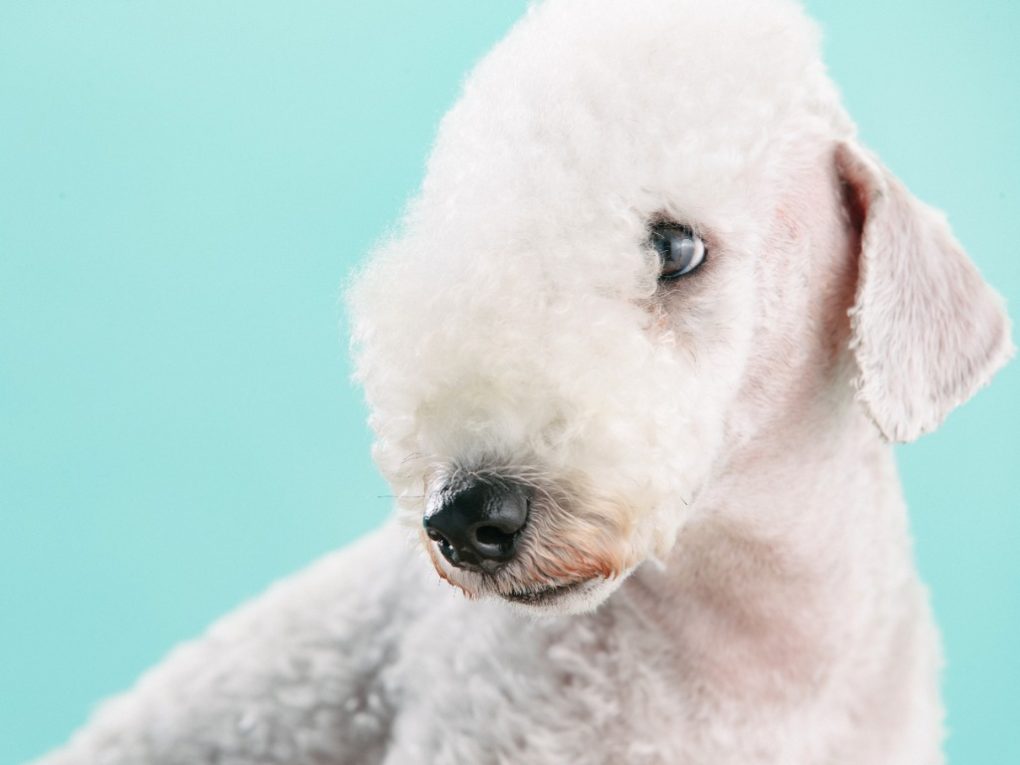Do Bedlington Terriers Change Colour? A Simple Answer
Bedlington Terriers do change color as they grow and mature. These adorable, curly-coated dogs are born with a darker coat that lightens over time.
Changing their coat color is natural as the adult coat replaces the puppy coat. Bedlington Terriers come in various colors, including blue, liver, sandy, and variations with tan markings. As they grow up, their coat gradually fades into a lighter hue. By reaching adulthood (around 18-24 months), their coat color settles to its final shade, a unique trait that makes them distinctive among dog breeds.


Table of Contents
Do Bedlington Terriers Change Color?
Bedlington Terriers are born with a dark coat. Blue Bedlingtons are born black, while liver and sandy dogs are born dark brown. Their coat color changes as they age, and they eventually develop their adult coat color.
You can easily differentiate between Bedlingtons based on skin color and nose/eye pigment. For example, Blue Bedlington terriers have a black nose, eye rim, and a dark brown eye. While, Liver Bedlingtons have a brown nose and eye rim, with a hazel eye. In addition, Sandy Bedlingtons have a liver-colored nose and eye rim, with a hazel eye.
It’s important to note that the change in coat color is not drastic. Bedlington Terriers do not change color completely. Instead, their coat color gradually lightens as they grow older.
Their environment and diet can also influence the coat color of Bedlington Terriers. A dog that spends a lot of time in the sun may have a lighter coat color than one that spends most of its time indoors. Similarly, a dog fed a diet rich in certain nutrients may have a more vibrant coat color.
Bedlington Terriers change color as they age, but the change is not drastic. Their coat color gradually lightens, and the noticeable difference is in the skin color and nose/eye pigment. Their environment and diet can also influence the change in coat color.
The Genetics of Bedlington Terriers
Bedlington Terriers are known for their unique and distinctive appearance, which includes a curly, woolly coat that can change color as the dog ages. While some Bedlington Terriers are born with a dark coat that lightens as they mature, others are born with a light coat that darkens over time, this change in coat color is due to the breed’s genetics.
The gene responsible for the coat color of Bedlington Terriers is called the Melanocortin 1 Receptor (MC1R) gene. This gene controls the production of melanin, the pigment that gives color to animals’ hair, skin, and eyes. In Bedlington Terriers, the MC1R gene can produce three different variations: a dominant black allele (K^B), a recessive liver allele (k^b), and a recessive blue allele (k^b).
A Bedlington Terrier will have a black coat when it inherits two copies of the dominant black allele (K^B/K^B). It will have a blue coat if it inherits one copy of the dominant black allele and one copy of the recessive liver allele (K^B/k^b). In addition, it will have a liver-colored coat if it inherits two copies of the recessive liver allele (k^b/k^b).
However, the coat color of Bedlington Terriers is not always predictable. Some Bedlington Terriers may have a combination of black, blue, and liver-colored hairs on their coat, making it difficult to determine their exact color. Additionally, the color of a Bedlington Terrier’s coat can change as it ages due to the gradual loss of melanin production.
Despite the variability in coat color, Bedlington Terriers are still recognized for their unique and charming appearance. Understanding the breed’s genetics can help breeders produce puppies with the desired coat color and help owners appreciate the beauty of their furry companions.
Factors That Affect Bedlington Terrier Coat Color
Bedlington Terriers are known for their unique coat color, varying from blue, liver, sandy, or even a mix of these colors. However, several factors can affect a Bedlington’s coat color, including sun exposure, diet, and skin health.


Genetics
Genetics play a significant role in the color of a Bedlington’s coat. The presence of specific genes determines the breed’s coat color. The A locus gene determines the color of the coat, with the dominant allele responsible for black and the recessive allele responsible for liver. The B locus gene determines the dilution of the coat color, with the dominant allele responsible for blue and the recessive allele responsible for sandy.
Sun Exposure
Sun exposure can affect the color of a Bedlington Terrier’s coat. Sunlight can bleach the coat, causing it to appear lighter. In contrast, lack of sunlight can cause the coat to appear darker. Therefore, it is essential to protect a Bedlington Terrier’s coat from excessive sun exposure to maintain its color.
Diet
Diet can also play a role in the color of a Bedlington Terrier’s coat. Nutritional deficiencies can cause the coat to appear dull or discolored. A well-balanced diet that includes essential nutrients, such as protein, vitamins, and minerals, can help maintain the coat’s color and shine.
Skin Health
The health of a Bedlington Terrier’s skin can also affect the color of its coat. For example, skin diseases or conditions, such as allergies or infections, can cause the coat to appear discolored or patchy. Therefore, it is essential to maintain good skin health through regular grooming and veterinary care to ensure that the coat remains healthy and vibrant.
Common Coat Colors of Bedlington Terriers
Bedlington Terriers are a unique and charming breed with distinctive curly coats in various colors. Here are some of the most common coat colors of Bedlington Terriers:
Blue
Blue is the most well-known and popular color for Bedlington Terriers. Blue Bedlington Terriers have a dark blue-gray coat ranging from light to deep blue, the coat is usually lighter on the legs and belly and darker on the back and head, and Blue Bedlington Terriers have black noses and eye rims, with very dark brown eyes.


Liver
Liver Bedlington Terriers have a rich, dark brown coat that can vary in shade from a light liver color to a deep chocolate brown. The coat is usually lighter on the legs and belly and darker on the back and head. Liver Bedlington Terriers have liver-colored noses and eye rims, with amber or brown eyes.
Sandy
Sandy Bedlington Terriers have a light brown coat ranging from pale sandy to darker tan. The coat is usually lighter on the legs and belly and darker on the back and head. Sandy Bedlington Terriers have light brown noses and eye rims, with hazel or brown eyes.
Blue and Tan
Blue and Tan Bedlington Terriers have a blue-gray coat with tan legs, chest, and face markings. The coat is usually lighter on the legs and belly and darker on the back and head. Blue and Tan Bedlington Terriers have black noses and eye rims, with dark brown eyes.
Liver and Tan
Liver and Tan Bedlington Terriers have a liver-colored coat with tan legs, chest, and face markings. The coat is usually lighter on the legs and belly and darker on the back and head. Liver and Tan Bedlington Terriers have liver-colored noses and eye rims, with amber or brown eyes.
White
White Bedlington Terriers have a pure white coat with no markings. The coat is usually curly and soft. White Bedlington Terriers have black noses, eye rims, and dark brown eyes.
Overall, Bedlington Terriers have a unique coat that can come in various colors. Genetics, diet, and sun exposure can affect the color of a Bedlington Terrier’s coat. Therefore, caring for a Bedlington Terrier’s coat properly is important to maintain its color and texture.


How to Care for Your Bedlington Terrier’s Coat
Bedlington Terriers are known for their unique curly and woolly coat that can change color over time. To keep your Bedlington Terrier’s coat healthy and looking its best, it is important to follow proper grooming and bathing techniques, and to protect the coat from damage.
Grooming Tips for Bedlington Terriers
Regular grooming is essential for Bedlington Terriers to keep their coat free of mats and tangles. Use a slicker brush or comb to brush through the coat at least once a week, paying special attention to the areas around the ears, legs, and tail.
For Bedlington Terriers with longer hair, it is recommended to use scissors or clippers with a long guard to trim the long, unruly hairs. Depending on your preferred grooming style, use clippers to even up the fur on the head, ears, legs, and tail.
Bathing Your Bedlington Terrier
Bathing your Bedlington Terrier too frequently can strip their coat of natural oils, so it is recommended to bathe them every 4-6 weeks. Use a mild dog shampoo and warm water to wet the coat thoroughly, then massage the shampoo into the coat. Then, browse thoroughly and repeat if necessary.
After bathing, use a towel to dry the coat, and then use a hair dryer on a low setting to dry the coat. Finally, make sure to brush the coat while drying to prevent matting.
Protecting Your Bedlington Terrier’s Coat from Damage
To keep your Bedlington Terrier’s coat looking its best, it is important to protect it from damage. Avoid exposing your dog to harsh chemicals or other irritants, and keep them away from rough surfaces that can cause matting or tangling.
Regular grooming and bathing can also help protect the coat from damage. Use a dog-specific conditioner to help keep the coat soft and shiny, and avoid using human hair products on your dog.
Following these simple grooming and care tips can help keep your Bedlington Terrier’s coat healthy and looking its best.
